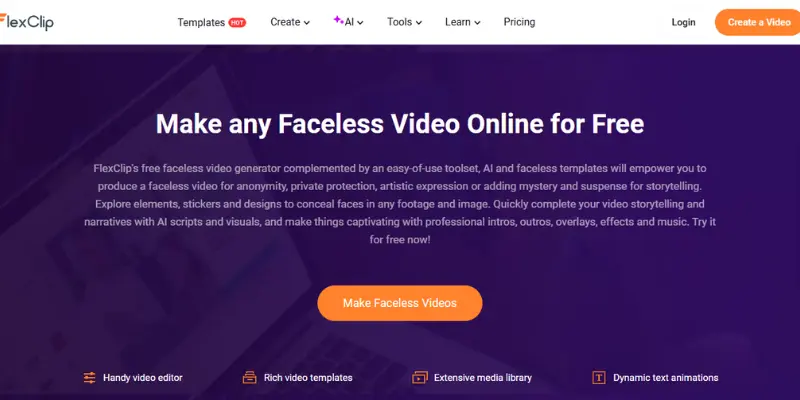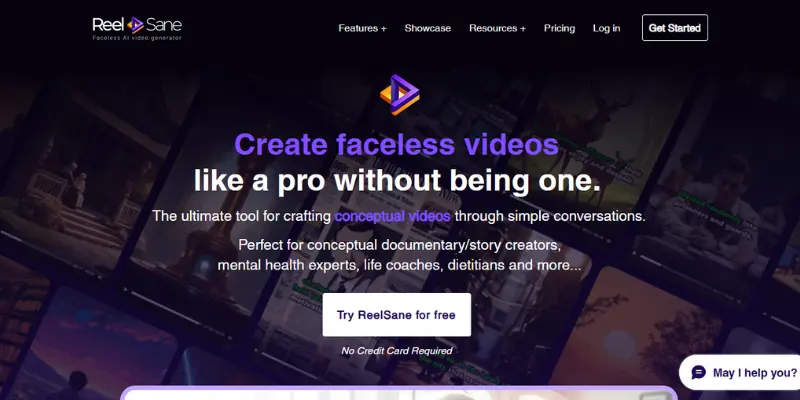Content creation has itself experienced a seismic shift over the last several years as AI injected itself into video production. Among the pioneers who have shaken up the video landscape faceless videos are one of the most powerful emerging trends, characterized by videos that do not necessarily have on-camera presenters but use AI in order to produce graphics, voice-overs, and animations to make content fresh and interesting.
This blog will walk you through the importance of faceless videos, their top AI tools in vogue currently, their features, pros and cons-if you wish to revolutionize your content strategy.
Introduction to Faceless Video Creation
Faceless videos create video content without a person ever being on camera. Because of these movies, ideal for educational tutorials and explainer videos as well as storytelling, this allows creators room to focus more on visuals and narration. This has gone ahead and become a game-changer; AI has simplified the process and made quality content creation accessible to everyone and businesses.
Why Faceless Videos Are Gaining Popularity
Faceless videos are increasingly in demand because of several different reasons:
- Anonymity: When the creators do not want public identities, then still they can maintain it with private identity and create massive content.
- Cost-Effectiveness: Saves on equipment, especially high-price cameras and professional actors.
- Versatility: Can be employed in various niches, for example in education, marketing, and entertainment.
- Artificial Intelligence Accessibility: AI technology automates complex things such as editing, voiceovers, and animation, hence making content creation more efficient.
The Role of AI in Transforming Video Production
This new wave of content creation entails important roles by AI:
- VIDEO EDITING AND TRANSITIONS Automatic video edits and transitions.
- Such TTS systems produce extremely near-realistic voiceovers.
- Use graphics and animations to enhance the storytelling process.
- Reduced production time through script-to-video workflows.
Top AI Tools for Faceless Video Creation
Here are the collections of the best 10 AI tools that you can use for creating faceless videos along with their descriptions, advantages, and disadvantages.
1. VEED.IO
VEED.IO delivers an easy dashboard for developing professional faceless videos. The service allows users the convenience of recording screen, using text overlays, and voiceovers powered by AI.

Pros:
- User-friendly interface.
- Comprehensive editing tools.
- Subtitles and caption generation.
Cons:
- Limited advanced AI features.
- Premium plans are relatively expensive.
2. InVideo AI
InVideo AI endifies text prompts into full-blown videos using pre-built templates and AI-powered voiceovers.

Pros:
- Automated script and scene generation.
- A wide range of templates.
- Beginner-friendly interface.
Cons:
- Watermarks on free plans.
- Advanced customization requires technical knowledge.
3. Nullface AI
Nullface AI is targeted towards the types of applications used with TikTok and YouTube and, therefore is designed to automatically generate ‘glamorous faceless videos’ on the basis of minimal user input.

Pros:
- Trend-driven content suggestions.
- Quick video generation.
- Focused on short-form content.
Cons:
- Limited support for long-form content.
- Features are still under development.
4. Kapwing
Kapwing is a cloud-based video editing company using artificial intelligence tools in the creation of faceless videos, based on text prompts and your own visual elements.

Pros:
- Collaborative editing capabilities.
- Robust cloud storage.
- Free version available.
Cons:
- Watermarks on free outputs.
- Slower rendering during peak times.
5. AutoReels.ai
AutoReels specializes on creating reels and short videos optimized for social media platforms such as Instagram and YouTube.

Pros:
- Quick and easy to use.
- Social-media-focused templates.
- AI-optimized video quality.
Cons:
- Not suitable for non-reel formats.
- Limited editing flexibility.
6. AutoShorts.ai
AutoShorts.ai is designed to create faceless videos for YouTube Shorts and TikTok, automatically in the fastest mode.

Pros:
- Minimal learning curve.
- Ideal for fast-paced content creation.
- High efficiency in generating topic-specific videos.
Cons:
- Limited creativity options.
- Best suited for short videos only.
7. MetaClips
This is a tool that uses AI, exploiting it to produce faceless videos prepared for virality on short-form platforms such as TikTok and YouTube Shorts.

Pros:
- Platform-specific optimization.
- Easy-to-navigate interface.
- Affordable pricing.
Cons:
- Limited to short-form content.
- Basic customization features.
8. QuickShorts.ai
QuickShorts.ai is a type of AI that generates short faceless videos for both TikTok and YouTube so that you can create your videos without so much hassle.

Pros:
- Speedy creation process.
- Social media-friendly formats.
- Simple and efficient.
Cons:
- Not ideal for professional-grade videos.
- Fewer advanced tools.
9. FlexClip
The application employs AI and templates in creating a story-oriented faceless video for any type of use.

Pros:
- Free to use.
- Extensive library of templates.
- Supports multiple file formats.
Cons:
- Limited AI-driven automation.
- Watermarks on free plans.
10. ReelSane
ReelSane offers a feature of a chat-based AI interface, capable of automating every aspect of a video-making process, from scriptwriting to narration.

Pros:
- Full automation of the workflow.
- High-quality outputs.
- Flexible customization options.
Cons:
- Heavily prompt-dependent.
- Subscription costs may deter casual users.
Key Features of AI-Powered Video Makers
Such tools have certain features that help develop content efficiently:
- Script-to-Video Conversion: Upload a text or script to generate videos in seconds.
- Voice Cloning: Your video may be narrated by a computer-generate voice.
- Dynamic Animations: Activate animations of the and blur movies with transitions.
- Optimizing for Platform Contexts: Adapting to YouTube, TikTok, and Instagram.
How AI Enhances Anonymity and Creativity
AI enables content creators to tell extraordinary stories in novel ways without requiring anonymity. Faceless videos allow:
- This happens without it being shown on camera.
- More emphasis on visuals and infographics.
- Creative licence to experiment on abstract ideas.
Challenges in Creating Faceless Videos with AI
Though automation through AI has streamlined this entire process, there still are challenges:
- Lack of personal touch: The content being faceless sometimes does not appeal to the audience.
- Technical Limitations: AI-generated videos often seem less nuanced or emotionally deep.
- Learning Curve: Some tools take time to learn.
Ethical Considerations in AI-Driven Content
Meaning that, AI needs ethics to guide and direct it on what kind of content to develop:
- Authenticity: To be explicit in the fact that this was an AI-generated text.
- Bias in AI models: AI monitoring to ensure AI tools do not create unintended bias in content generated.
- The reason for this is the avoidance of copyright issues by using licensed or royalty-free assets.
Real-World Applications of Faceless Videos
Faceless videos are also used in various fields:
- Education: Tutorials and explainer videos for online learning.
- Marketing: Product demos and promotional content.
- Entertainment: story and animation contents.
- Corporate Training: Induction and employee communication and onboarding videos.
Future Trends in AI and Faceless Video Creation
The future seems hopeful, not just because of the faceless videos but also because of the following advancements:
- Real-Time Video Generation: AI generates videos from prompts in real-time.
- Hyper-personalization: Tailored videos to meet everyone’s tastes.
- Better Visual Realism: Improvements in the graphics and animations resulting from AIs.
Conclusion: The Impact of AI on Video Content
Faceless videos demonstrate the potential of AI in transforming how content is produced. AI also allows creators, armed with intuitive tools that simplify the process of making a video, to experiment and take risks while remaining hidden in their narratives. Such perspectives for fresh, meaningful content abound as these tools are developed. Whether you are veteran or novice, embracing AI-assisted video creation will change your creative endeavors.
Macrotechy delivers the latest tech news and expert solutions, helping you stay updated and empowered in the fast-paced world of technology.
